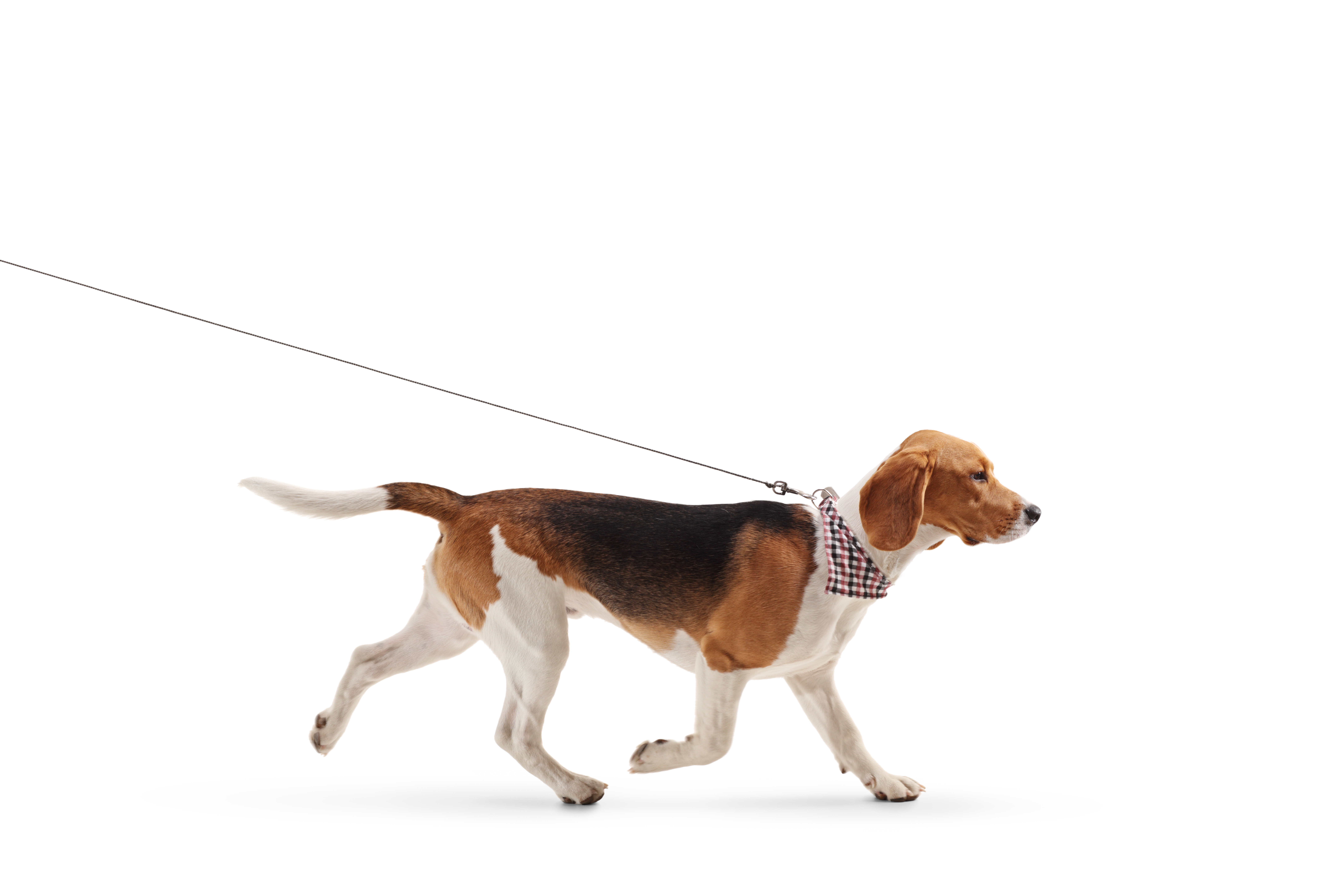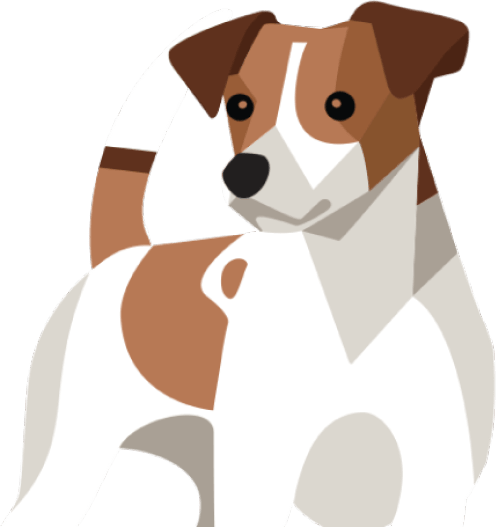
Whether your dog is a bit older and always had a bad habit, a new puppy or a new addition to your family; a dog pulling on a lead can be a stressful experience.
When imagining dog walking, it is always portrayed as a lovely relaxing experience, seeing their happy faces, exercise and fresh air for you. But for those dogs which pull on a lead, this is a far from relaxing experience.
Ill-fitting collars.
One point to be aware of, which many paw-parents overlook, is the fit of a dog collar. If you find that your dog is pulling forward on the lead and choking themselves on their collar, it is likely to be fitting too loosely.
The room that your dog can feel around their collar is almost a trigger for them to pull, as they can feel the space and have the power to do so.
A dog’s collar should sit high up on their neck, not lower down to their shoulders. When a dog walks forward on a lead and their collar sits low on their shoulders, they can quite easily pull because of all that space for it to move, giving your four-legged friend power to pull you forward.
While a proper fitting collar won’t stop your pooch from pulling, it will certainly be less of a trigger to aid their behaviour.
Our 5 tips to help stop your dog pulling on a lead
Before leaving the house
A lot of lead pulling is due to excitement, especially if you have an active breed or younger dog. Going for a dog walk starts before you leave the house. While it is an exciting time for your four-legged friend, it’s always a positive move to try nip the excitement in the bud before you leave your home.
If your dog reacts energetically when they see their lead, put it back and try again. Give it a few minutes in between attempts until your dog will sit still and calmly when they see their lead. Over time this repetition will get easier.
When leaving the house, always set off first and let your dog follow. Your little companion needs to know who is boss, and they might not think it; but that is you!
You lead the way and the direction of the walk.
The direction of the walk
Sometimes dogs pull because they know the way. If you are a creature of habit and walk the same route on a daily basis your dog will believe they can do it without you. They will also try to walk ahead because they don’t need to see where you are going.
Try to mix up the direction you go when you leave your house (where possible), set off to the left, or right or cross the road straight away to add some question of uncertainty around where you are going. This will ensure your dog cannot master the roads and take YOU on the walk.
Tension on the lead
When walking your four-legged friend you want to be aiming for a nice slack lead, with the clip pointing towards the ground. As soon as you hold a lead tight, this tension goes straight down through the lead into your dog’s collar and they can feel this tension. Much like the loose collar, it’s a driver to pull.
Walking with a slack lead will only come with time and practice, the idea is that your dog will get so used to the leading of a slack lead that when they get a little ahead of themselves, they will feel the tension and slow down, or return back to you.
Repetition
Getting a dog to walk nicely on their lead isn’t a sprint, it’s a marathon and will take time and repetition to instil the behaviour. But with the right positive reinforcement, it can be an enjoyable experience for both owner and dog.
Recapping back on the slack lead, always start off your walk with your pooch by your side, sat, and on a slack lead. When your dog is sitting quietly and still, do the same and ignore them. If they give you any form of movement, attention or signal they want to go give them a treat (so as to gain their attention) and then you step forward first.
Use words of positive reinforcement, “good girl/boy”, “clever girl/boy” to keep their attention on you and keep rewarding them with treats. When a dog is being rewarded their attention will not be on the process of walking, more so on what you are doing and by that action, they will be walking nice and close to you; at your pace! A great treat to have handy in your pocket is Laughing Dog’s Chewy Boosts or Fish and Tricks treats. They are both bite sized little treats which are easy on digestion as well as being tasty to keep your four-legged friend motivated!
As soon as your dog moves away from you, breaks attention or starts to pull, stop walking. Stand still and quiet again, much as you did when you started off and wait for your dog to do the same. Then repeat the process, wait for them to interact with you, capture their attention with treats and positive words and then step forward.
This might take numerous attempts and might double the time it takes for you to reach your destination, but the time and hard work will certainly pay off in the long run. Dogs are very much creatures of habit and don’t forget tricks and rules once they have been positively instilled in their minds.
Your patience and calm approach to guided walking will make the training process run much smoother.
Walking aids
During the training process you can add in the added help of a walking aid or headcollars such as a Halti collar which sits around a dogs nose. Flatter faced dogs cannot wear these which can make it more difficult for these breeds to learn, but typically they are not known to be big pullers as a breed. The feeling of the Halti lead tightening around the nose of a dog is a strange feeling, albeit not uncomfortable, it is usually just enough tension in an unwanted place to make them walk more slack.
The danger of using walking aids such as Halti’s is that a dog can become reliant on learning to walk nicely with that aid. Once this is removed, your dog’s habit could be broken, so always attempt to use it with care and caution over a shorter period of time if you really need the extra assistance.
If your dog has never worn a walking aid or headcollar before they are likely to interact with it in a strange manner. It is a strange feeling having a bridge over their noses and many dogs roll on the floor or claw at their face to get it off. Before heading out for your first walk using the aid, try it on your dog in your home a few times.
Put it on them, and take it off a few times so that they can get used to the feeling. If your dog does react badly to the feeling, take your time with it. Don’t put increased stress on your dog and if they won’t adjust to wearing it in the home for a few short minutes, it is unlikely it is the right method for helping with training your dog to stop pulling.
Our dog walking summary
In summary, teaching your dog to stop pulling on a lead isn’t an easy task, but there is no reason it doesn’t need to be enjoyable. Dogs are keen to learn and please their owners, this one to one time spent with them will be thrilling for them and satisfy a number of their senses.
The process will require a lot of patience and repetition, from your part, always be cool and calm. The hard work will pay off. Good Luck!!

